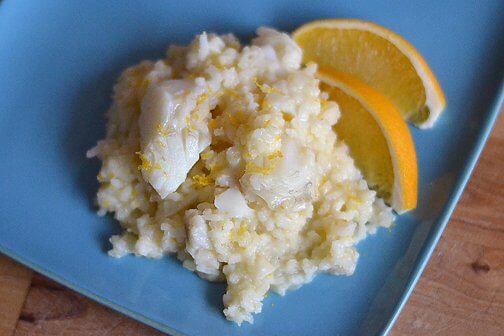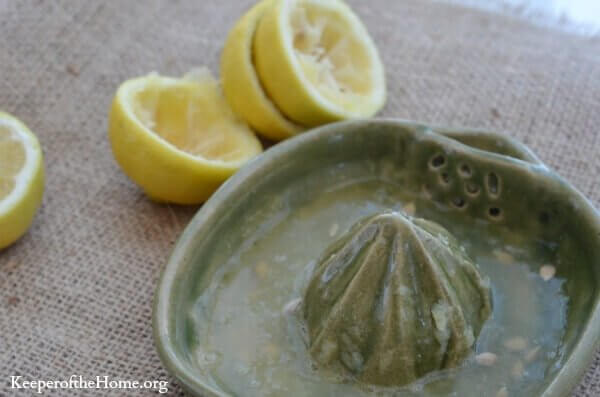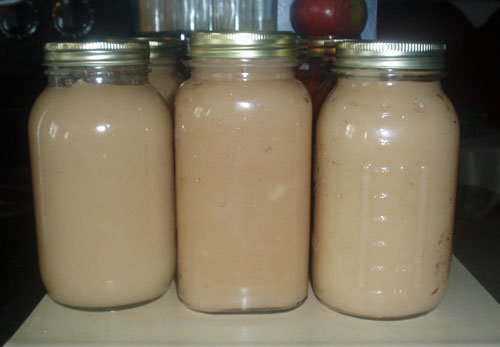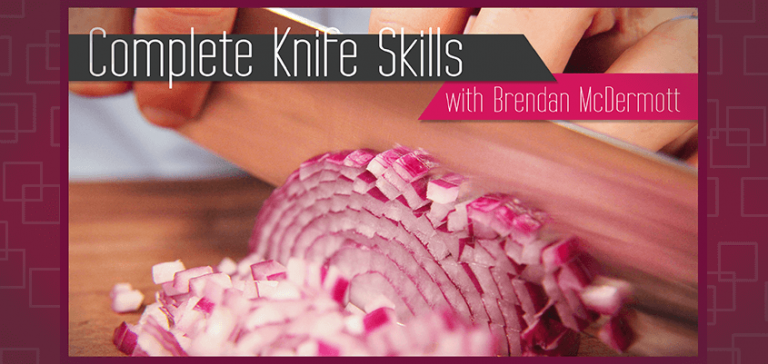The Importance of Trace Minerals {and How to Increase Your Intake!}
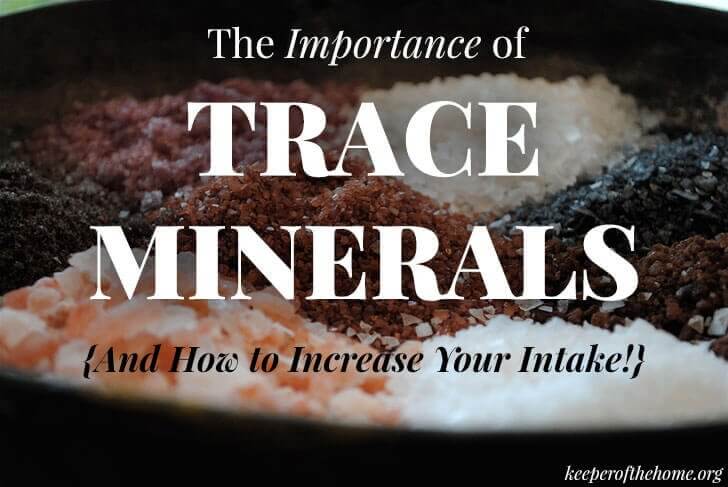
This post was originally published in November of 2008, but is a great reminder that your body needs these minerals just as much as the other elements of good nutrition that we discuss on a regular basis!
Sure, we all know that it’s important to get the “biggies” (macrominerals) into our diet: calcium, magnesium, potassium, etc.
Did you know, though, that there are over 30 other minerals which our bodies need in minute, trace amounts, but without them it cannot function at it’s full potential and disease may even develop?
These minerals, often called “trace minerals,” include well-known minerals such as iron, zinc and iodine. They also include many lesser known minerals, like selenium, silicon, manganese, boron, copper, cobalt and even germanium!
So how do you make sure that you and your family are getting enough of these all-important nutrients in your diet?
Increase your body’s uptake of minerals by:
1. Ensuring that you are getting plenty of fat-soluble vitamins (A, D, E and K) and good cholesterol in your diet.
This strengthens and supports both your glandular and digestive systems, to make sure that your body knows which and how much of each of the minerals to absorb.
[Tweet “Many minerals require other minerals and vitamins to be present for them to be well absorbed. “]
Good foods for this include: butter, eggs, liver and other organ meats, fish and seafood, cod liver oil, whole grains, nuts, seeds, and dark leafy vegetables.
2. Eating a varied and balanced diet, including lots of fresh vegetables and minimal sugar.
Many minerals require other minerals and vitamins to be present for them to be well absorbed. An example of this is the way that iron is better absorbed when plenty of Vitamin C is present at the same time. As well, keeping our bodies more alkaline (as opposed to being too acid) promotes better nutrient assimilation overall. Too much sugar or processed foods and not enough vegetables can lead to a more acid state in the body.
3. Watching out for substances that impair mineral absorption, or actually pull it out of our bodies.
For instance, phytic acid in improperly prepared grains (oh dear, I’m harping on this again– must be important! :), oxalic acids in green leafy vegetables like spinach and swiss chard (this minimizes when they are lightly cooked), and tannins in black teas.
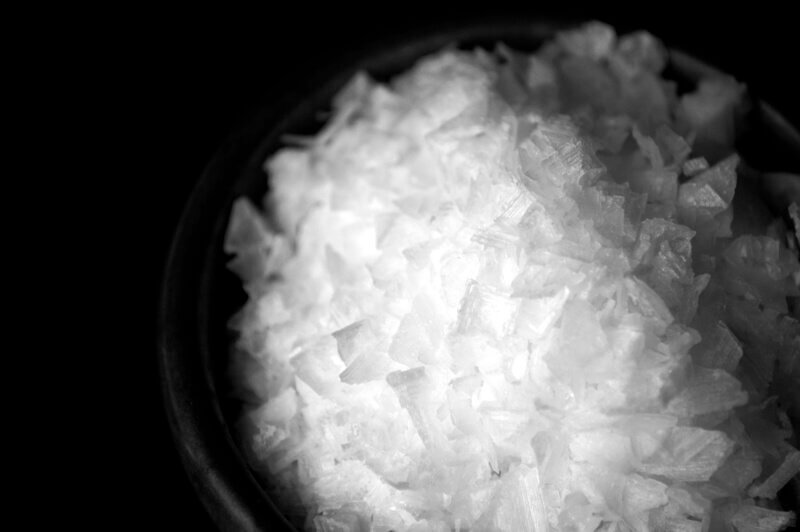
Image credit
Where to find trace minerals in abundance:
Bone Broth: An excellent source of both macro and trace minerals, as well as beneficial gelatin. These are simple to learn to make and have so many health benefits, in addition to being delicious!
Sea Salt: We’ve all heard that we should reduce our consumption of salt, but it’s really only regular table salt that we should be concerned about. Good quality, unrefined sea salt can contain up to 92 minerals (while table salt contains only 2- sodium and chloride.)
Personally, I buy Redmond’s RealSalt, from the Utah flats (left from ancient sea beds, from when water used to cover Utah). On the back of the package, it lists calcium, potassium, sulfur, magnesium, iron, phosphorus, idodine, manganese, copper and zinc, in addition to other trace minerals in minute quantities (it claims to contain over 50 minerals). Some other great brands are Celtic Sea Salt, Flower of the Ocean, and Himalayan Pink Salt.
Kelp: This is a type of seaweed which is dried and used in powdered form. It has a salty (though slightly fishy) taste. It contains 28% minerals, including a rich variety of trace minerals (as do most foods from the sea). See a nutritional analysis here.
Kelp can be added to foods as a seasoning, in small amounts. When I do this, in my spaghetti sauce, bone broths, soups or stews, etc., it can’t be tasted (as long as I keep it minimal- under 1 teaspoon). This might not seem like much, but when used consistently it is just another way to add minerals to our overall diet.
Clay: Particular types of clay contains large numbers of minerals, and various cultures have traditionally used these to supplement their diets. I first heard of this in Nourishing Traditions, where Sally Fallon recommends Azomite Mineral Powder as a nutritional supplement. I’ve had success using Redmond Clay as both a supplement and a natural home remedy.
Nutrient and Mineral Rich Foods: Simply by consuming a good variety of foods that are rich in these essential minerals will help to ensure that we are getting enough of them. Some excellent foods to consume regularly include: molasses, nuts and seeds, garlic/onions, liver, butter, seafood and fish, whole grains and dark leafy vegetables.
How do you ensure that your family is getting adequate minerals in their diet? Is this the first you’ve heard of trace minerals?
Top image by Larry Hoffman
Disclosure: This post contains affiliate links. When you buy through our links, we earn a small commission, which helps to keep this site going so that we can continue to offer free and useful content, so thanks!


